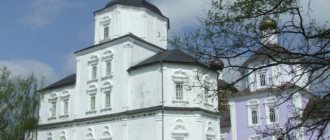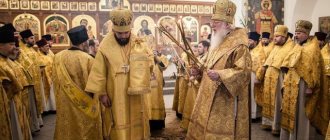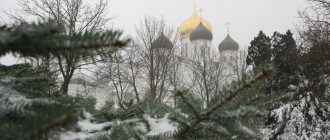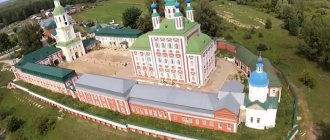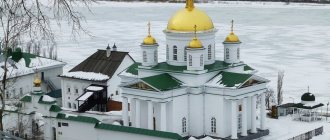Mir
Russia Primorsky Territory Russky village St. Seraphim Monastery (Russky Island) Map is loading…
{"format":"leaflet","minzoom":false,"maxzoom":false,"limit":50,"offset":0,"link":"all","sort":[""], "order":[],"headers":"show","mainlabel":"","intro":"","outro":"","searchlabel":"\u2026 \u0441\u043b\u0435\ u0434\u0443\u044e\u0449\u0438\u0435 \u0440\u0435\u0437\u0443\u043b\u044c\u0442\u0430\u0442\u044b","default":"","import-annotation":false,"width ":"auto","height":"350px","centre":{"text":"","title":"""link":"""lat":43.04370099999999865758582018315792083740234375,"lon": 131.821919000000008281858754344284534454345703125,"icon":""},"title":"","label":"","icon":"","lines":[],"polygons":[],"circles":[ ],"rectangles":[],"copycoords":false,"static":false,"zoom":8,"defzoom":14,"layers":["OpenStreetMap"],"image layers":[] ,"overlays":[],"resizable":false,"fullscreen":true,"scrollwheelzoom":true,"cluster":false,"clustermaxzoom":9,"clusterzoomonclick":true,"clustermaxradius":80, "clusterspiderfy":true,"geojson":"","clicktarget":"","showtitle":true,"hidenamespace":false,"template":"","userparam":"","activeicon": "","pagelabel":false,"ajaxcoordproperty":"","ajaxquery":"","locations":[{"text":"\u003Cb\u003E\u003Ca href=\"/palomnik/%D0% A1%D0%B2%D1%8F%D1%82%D0%BE-%D0%A1%D0%B5%D1%80%D0%B0%D1%84%D0%B8%D0%BC%D0%BE %D0%B2%D1%81%D0%BA%D0%B8%D0%B9_%D0%BC%D1%83%D0%B6%D1%81%D0%BA%D0%BE%D0%B9_%D0 %BC%D0%BE%D0%BD%D0%B0%D1%81%D1%82%D1%8B%D1%80%D1%8C_(%D0%BE%D1%81%D1%82%D1% 80%D0%BE%D0%B2_%D0%A0%D1%83%D1%81%D1%81%D0%BA%D0%B8%D0%B9)\» title=\»\u0421\u0432\u044f \u0442\u043e-\u0421\u0435\u0440\u0430\u0444\u0438\u043c\u043e\u0432\u0441\u043a\u0438\u0439 \u043c\u0443\u0436\u0441\u043a\ u043e\u0439 \u043c\u043e\ " \u003E\u0421\u0432\ u044f\u0442\u043e-\u0421\u0435\u0440\u0430\u0444\u0438\u043c\u043e\u0432\u0441\u043a\u0438\u0439 \u043c\u0443\u0436\u0441\u0 43a\u043e\u0439\u043c\u043e \u043d\u0430\u0441\u0442\u044b\u0440\u044c (\u043e\u0441\u0442\u0440\u043e\u0432 \u0420\u0443\u0441\u0441\u043a\u0438\u0439) \u003C/a\u003E\u003C /b\u003E\u003Chr /\u003E\u003Ca href=\"/palomnik/%D0%A1%D0%B2%D0%BE%D0%B9%D1%81%D1%82%D0%B2%D0%BE :%D0%90%D0%BD%D0%BD%D0%BE%D1%82%D0%B0%D1%86%D0%B8%D1%8F\» title=\»\u0421\u0432\u043e\ u0439\u0441\u0442\u0432\u043e:\u0410\u043d\u043d\u043e\u0442\u0430\u0446\u0438\u044f\»\u003E\u0410\u043d\u043d\u043e\u0442\u 0430\u0446\u0438\u044f \u003C/a\u003E: \u043f\u0440\u0430\u0432\u043e\u0441\u043b\u0430\u0432\u043d\u044b\u0439 \u043c\u043e\u043d\u0430\u0441\u04 42\u044b\u0440\u044c\ u0432\u043e \u0412\u043b\u0430\u0434\u0438\u0432\u043e\u0441\u0442\u043e\u043a\u0435, \u043e\u0441\u043d\u043e\u0432\u0430\u 043d\u043d\u044b\u0439\u0432 2001\u0433\u043e\u0434\u0443. \u041d\u0430 \u0414\u0430\u043b\u044c\u043d\u0435\u043c \u0412\u043e\u0441\u0442\u043e\u043a\u0435 \u2014 \u044d\u0442\u043 e\u0435\u0434\u0438\u043d\u0441 \u0442\u0432\u0435\u043d\u043d\u044b\u0439 \u043e\u0441\u0442\u0440\u043e\u0432\u043d\u043e\u0439 \u043c\u043e\u043d\u0430\ u0441\u0442\u044b\u0440\u044c . \u041f\u0440\u0438 \u043c\u043e\u043d\u0430\u0441\u0442\u044b\u0440\u0435 \u0434\u0435\u0439\u0441\u0442\u0432\u0443\u0435\ u0442\u0433\u043e\u0441\u0442 \u0438\u043d\u0438\u0446\u0430.","title":"\u0421\u0432\u044f\u0442\u043e-\u0421\u0435\u0440\u0430\u0444\u0438\u043c\u043e\u0432\ u0441\ u043a\u0438\u0439 \u043c\u0443\u0436\u0441\u043a\u043e\u0439 \u043c\u043e\u043d\u0430\u0441\u0442\u044b\u0440\u044c (\u043e\u 0441\u0442\u0440\u043e\u0432 \u0420\u0443\u0441\u0441\u043a\u0438\u0439)","link":"","lat":43.04370099999999865758582018315792083740234375,"lon":131.8219190000000 08281858754344284534454345703125,"icon":""}],"imageLayers":[ ]}
43.044696; 131.827139
Russia, Primorsky Krai, Vladivostok urban district, Russky village, Podnozhye village
Russky village, Primorsky Krai
Russia
Phones:
7 (908) 994-40-51,
Email:
St. Seraphim Monastery
- Orthodox monastery in Vladivostok, founded in 2001. This is the only island monastery in the Far East. There is a hotel at the monastery.
History[edit]
In 1904, a camp regimental church was established on Russky Island. The temple was located in a wooden barracks of the engineering department in the area of Rynda Bay, was under the jurisdiction of the 34th Siberian Rifle Regiment (9th East Siberian Rifle Division, which took part in the Russian-Japanese War) and accommodated 800 people. In 1914, construction was completed and the brick building of the regiment's temple was consecrated in the name of St. Seraphim, the Wonderworker of Sarov at the foot of the Russian Mountain. The blessing of the regiment from Their Imperial Majesties, given in 1914, was carefully kept in the temple - a small image of St. Seraphim of Sarov. In total, before the revolution, there were about twelve military Orthodox churches on Russky Island, but from most of them now only the foundations remain.
In 1918, in connection with the sending of the regiment to the front of the First World War and the Civil War, the Temporary Church “under the Administration of the Builder of the Vladivostok Fortress” functioned in the temple building. In 1921, hitherto belonging to the administration of the Protopresbyter of the Military and Naval Clergy (directly accountable to the Holy Synod), the church now came under the jurisdiction of the Vladivostok diocese. However, by 1923, the building was at the disposal of the Primorsky Council of Workers' and Peasants' Deputies: it was with its plenipotentiary representative that in December 1923 the Orthodox community of Ponozhiya entered into an agreement on the use of the “Liturgical building”. Services continued in the temple. True, for this the community had to obtain special permission from the NKVD.
Due to the fact that the Orthodox community of the Foothills had practically disintegrated and the unauthorized “seizure” by the Military Department and simply theft of church property by residents continued, in 1929 the “idea” arose about transferring the church building “for the cultural needs of the population of the Russian Island.” At a meeting of the Presidium of the Vladivostok District Executive Committee in 1930, it was decided “... the building of the cult of the Seraphim Church should be transferred to the workers’ club named after Sergeev to Rudmetalltorg.” Later, the club named after Sergeev becomes a sailor's club belonging to a military unit.
On August 5, 1995, after a long period of timelessness, the first Orthodox community registered on the island and turned to the city and naval authorities with a request for the return of the temple. The military was already ready for the transfer, but the city education committee unexpectedly intervened, claiming to use the temple building as a sports hall. In 1996, a fire broke out in the still empty building. Almost the entire interior, the roof, burned out, and the ceilings collapsed. Only the skeleton of the building and 20 percent of the roof survived. After this, the education committee abandoned the dilapidated building and it was handed over to the Orthodox community in such a neglected state. The restoration of the temple from ruins began. And soon, in the not yet restored temple, it became possible to hold services in a small, cramped room, which was located under the repaired roof. It took about two years to completely restore the dilapidated building of the former military temple.
In the first years of restoration of the church, its original name “Seraphim” was forgotten and the parish was named in honor of the Icon of the Mother of God “Hodegetria”. On September 9, 1997, Hieromonk Pavel (Khokhlov) performed the first baptism of residents of Fr. Russian. 18 people were baptized.
In 1999, copies of archival documents were received from the State Archives of the Primorsky Territory, on the basis of which a petition was submitted to rename the temple in honor of St. Seraphim, the Wonderworker of Sarov. Initially, the Church of Seraphim of Sarov was assigned to the Intercession parish, where Fr. Paul. On April 24, 2000, the Bishop of Primorsky and Vladivostok, Veniamin, visited Russky Island. This visit of the bishop to the island was the first in the hundred-year history of the diocese. Since the fall of 2000, the Seraphim parish was made independent and Hieromonk Varnava became its first rector.
On June 22, 2001, by decree of Bishop Benjamin, in order to further transform the church into a monastery and create a monastic monastery, Hieromonk Nikon (Annenkov) was appointed rector of the Church of St. Seraphim of Sarov. On October 6, 2001, at a meeting of the Holy Synod of the Russian Orthodox Church, it was decided to “bless the transformation of the parish in honor of St. Seraphim of Sarov on Russky Island in the city of Vladivostok, into the St. Seraphim Monastery.” In December 2001, the monastery passed state registration. The church building and a little more than 0.30 hectares of land on which the temple is located were transferred by the administration of the island to the Vladivostok diocese.
On March 29, 2002, during the days of Great Lent, Bishop Benjamin of Vladivostok and Primorsky performed his first tonsure in the monastery. In the same year, on the 3rd week of Easter (on the Sunday of the Myrrh-Bearing Women), Vladyka Benjamin again visited Fr. Russian and now St. Seraphim Monastery, together with the Commander-in-Chief of the Pacific Fleet, Admiral Fedorov. During the same visit of Archbishop Veniamin, the vicar, Hieromonk Nikon, was elevated to the rank of abbot. Initially, the inhabitants of the monastery lived in the temple building, where the refectory is located. By March 2005, a cell building was erected by the forces of the brethren and novices. From that time on, the brethren and novices of the monastery were housed in separate rooms for one and two people. A bathhouse was also built, a refectory, a kitchen, a library and a bookshop were installed.
In the spring of 2006, the foundations were laid at the St. Seraphim Monastery for a whole complex of new buildings: hotels for pilgrims (male and female), a cell building, workshops, and outbuildings. All buildings are built from timber. The first building has already been built - a women's hospice house, which will also house a prosphora. Also in 2006, for the day of memory of Seraphim of Sarov, a gatehouse was built in the St. Seraphim Monastery - a beautiful building with shutters, in the old Russian style. She decorated the main entrance to the monastery. The roof is topped with a dome, on which a spire with an angel rises about six meters.
St. Seraphim Monastery is the only island monastery in the Far East. Every weekend, parishioners and pilgrims from Vladivostok and the cities of the Primorsky Territory come to the temple. Cooperation with military units stationed on the island is gradually strengthening: conscripts receive Baptism in the church, confess and receive communion. The monastery is engaged in the spiritual care of military personnel both in the island units and in those located in the capital of Primorye.
Fate after the revolution
After the October events, the monastery existed until 1928. Then it was closed. Several nuns were persecuted. As Polyakova’s teacher Tamara Vladimirovna recalled, the remaining nuns were able to organize a “rural commune” and buy a house. There they lived, prayed, and earned money to feed themselves.
At first, 400 inmates of the children's colony were housed on the territory of the monastery. Later, the headquarters of General Vatutin was located here during the Great Patriotic War (1942 - 1943). Serafimovich (the convent of the Volgograd region received serious damage during heavy fighting) was significantly destroyed in the Battles of Stalingrad.
During the years of Soviet power, the Kazan Cathedral housed a pioneer camp, a grain storage warehouse, and a poultry farm. Later, a power plant was built there, which was dismantled in the most barbaric way by the end of the 60s. The unique structure was blown up, only the walls and marble columns of the building were preserved.
Driving directions to the monastery by car
From the city of Serafimovich you can get to the monastery by your own transport or by taxi from the city bus station. You can walk in 30 minutes (from the DRSU stop).
The main route from Volgograd to the city of Serafimovich runs along the P-22 “Caspian” highway (formerly M-6). By car the travel time is 3 hours 45 minutes. Fuel consumption is approximately 26 liters. The convent of the city of Serafimovich, Volgograd region, is open to everyone who wants to visit the pearl of the Orthodox faith.
Article design: Oleg Lozinsky
Grotto
Serafimovich (the convent of the Volgograd region has another underground monument, but of natural origin) is of interest to all lovers of unusual historical places.
The grotto was dedicated to the Georgian saint Shushanika (Susanna), who courageously endured suffering for the sake of faith. The entrance there is partially covered with earth. The nuns plan to reconstruct it to give tours.
Arch belfry
Once upon a time there was a stone church from the 18th century on this site. In 1934 it was blown up, only the arc-shaped structure remained. The architectural monument was converted into a belfry.
The portal was equipped with a crossbar and 7 bells were installed. The upper part of the arch was decorated with two azure domes. They are crowned with a pointed spire.
Visiting conditions
It is necessary to choose clothes that comply with church rules. Women wear long skirts and dresses (length below the knees), the top must be equipped with long or ¾ sleeves.
The head is covered with a headscarf, scarf, scarf, or hat. Men are not allowed to wear T-shirts or shorts; shirts, T-shirts, and trousers are allowed.
It is recommended to take water and food for a snack. However, the monastery has a refectory for pilgrims. They feed you there for free for the glory of God or leave a donation (optional).
It is allowed to film and photograph buildings and attractions in the vicinity of the monastery so that the inhabitants of the monastery do not get into the frame (not inside temples, caves). When visiting a holy place, you must treat it with respect and reverence.
Tomb of the Seven Nuns
In 2014, the remains of former nuns were reburied on the territory of the Ust-Medveditsky Monastery. The sisters stayed at the monastery until 1928.
Their names:
- Animanida;
- Afanasia;
- Barsononthia;
- Euphalia;
- Euphrasia;
- Hope;
- Raisa.
Monastery opening hours
Table:
| Day of the week | Opening hours |
| Monday | 07.30 –18.00 |
| Tuesday | |
| Wednesday | |
| Thursday | |
| Friday | |
| Saturday | |
| Sunday | |
| No lunch | |


